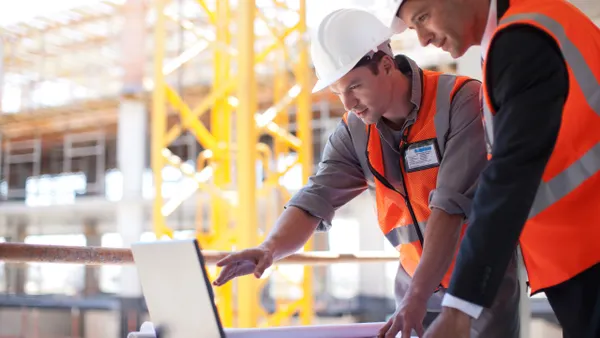Safety leaders at construction firms often promote vigilance on projects, encouraging workers to be a set of eyes for their fellow coworkers. But there are limits to the observations that employees can make as they go about their tasks for the day.
Artificial intelligence tool Smartvid.io marries machine learning to jobsite photos, videos and other sources and rakes through the data far more quickly than a human could, so that fewer risks to workers slip under the radar. A growing number of general contractors are exploring the product’s ability to identify and label risks such as standing water or missing personal protective equipment like hard hats, safety glasses, gloves and more.
The nature of machine learning means that the more data is fed into the tool, the more the algorithm, dubbed “Vinnie,” can advance in its accuracy. Following up on a study which found that Vinnie learned from Suffolk’s data to predict roughly one in five safety incidents with 81% accuracy, nine construction firms joined a data-sharing council in March to further accelerate the tool: Suffolk, Barton Malow, Clayco, DPR Construction, JE Dunn, Messer Construction Co., Mortenson, Shawmut Design and Construction and the Bouygues Group.
Shawmut, for example, is piloting Smartvid.io on at least 30 projects, CEO Les Hiscoe told Construction Dive. “It’s really one of the few pieces of AI that I’ve seen applied in construction,” he said.
For years, a company’s safety performance has primarily been measured in terms of lagging indicators such as past injury and incident rates. Many in the industry recognize that the ability to act on leading indicators, such as data from predictive technology, will better position them to prevent safety incidents altogether. A new Associated Builders and Contractors study, for example, found that companies that take proactive measures to curb incidents can reduce them by 85%.
“I think historically, safety has been very reactive, and if we can get to proactive, we can get to that place of true prevention,” said Hiscoe. In addition to project-level dashboards with metrics like PPE compliance and other benchmarks, Shawmut uses an executive dashboard with leading indicators and weekly trend data for each project.
Safety leaders at Webcor, which is in the early stages of a Smartvid.io pilot, are also looking to technology to target and prioritize the most pressing risks on jobsites. When trends come to light via this or other technologies, “you use those tools to help create the kind of conversation that you want,” Webcor Builders VP Greg Chauhan told Construction Dive. Managers might use the next toolbox talk or morning huddle to review best practices for an area that’s seeing safety lapses, he suggested.
Charlie Avolio, president and general manager of Suffolk’s New York region, likewise said the patterns that technology presents help steer safety managers’ priorities. “You can react to some of the low-hanging fruit when you start looking at where the trends are on your jobs,” he told Construction Dive, noting that the data could help identify both bad habits and well-meaning routines that don't produce a positive result.
Mike Lorenzo, director of emerging technologies with AECOM Building Construction, told Construction Dive that Smartvid.io helped the firm improve its safety rate on the $1 billion One Vanderbilt mixed-use project in New York City. He noted a few challenges associated with the nine-month deployment, however, namely that companies have to either mount more cameras across the site or require the team to take more photos to populate the database. In addition, employees could be tempted to take a photo of a risky situation onsite instead of first mitigating it, Lorenzo added.
Despite the learning curve, Lorenzo is looking forward to exploring more ways to employ smart video on future projects.
"Right now in the machine learning and AI space, photo recognition is one of the most proven technologies that has really come out in last year," he said.












